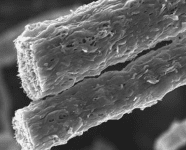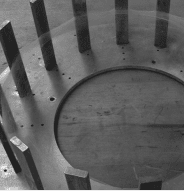Carbon fibers are a great ingredient to achieve lightweight and very sturdy structures, thus they are used very often in performance materials. However, it is possible to improve their performance, and one way to do so is to add carbon nanotubes, which improve on the composites’ overall tensile strength.
One issue that faces materials scientists in this case, as in many others, is how to scale up production in such a way that it is feasible to cheaply produce massive quantities of a material, which then becomes interesting industrially and not only a research lab toy. Karen Lozano and co-workers, at University of Texas—Pan American in Edinburg, Texas, showed in an article just published in the Journal of Applied Polymer Science a new way to make these composites which they believe can crack the code to strong, but cheap, materials for a variety of applications, particularly in energy storage, since the composites they produce have very good electrical conductivity as well.
The key to the new carbon fiber-carbon nanotube composites production method is a technique called forcespinning, which uses centrifugal force to produce aligned nanofibers by using less solvent than competitive methods. The authors use equipment from FibeRio Technology Company, a Texas-based company which commercializes proprietary technology for production of aligned nanofibers based on forcespinning technology (FibeRio also funded the present research).
The authors functionalized the nanotubes to disperse them in a solvent, then they added polyacrylonitrile to the solution and force spun composite polyacrylonitrile fibers with closely aligned carbon nanotubes (CNTs), which improves both the mechanical as well as electrical properties of the fibers. The polymer polyacrylonitrile is usually the precursor of choice to produce carbon fibers through carbonization, and thus once this step follows the production of the polymer composite nanofibers, what is left is set of strong composite carbon fibers, incorporating aligned nanotubes.
Given the good degree of dispersion of the nanotubes in solvent in the first step of the fabrication process, the authors can manage to create fibers with high content of nanotubes, up to 15%, without incurring in the problem which always plagues nanotube composites with high nanotube content, agglomeration of the tubes. Agglomeration would reduce the electrical conductivity of the composites, and likely damage their mechanical properties as well, but here the authors manage to sidestep this problem by functionalizing the nanotubes in the first step of their fabrication procedure.



















